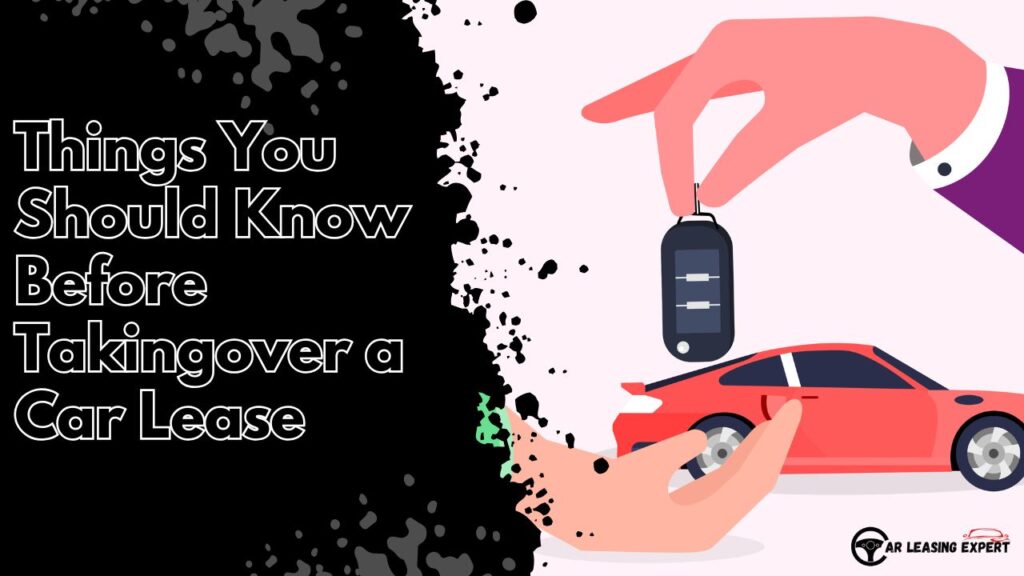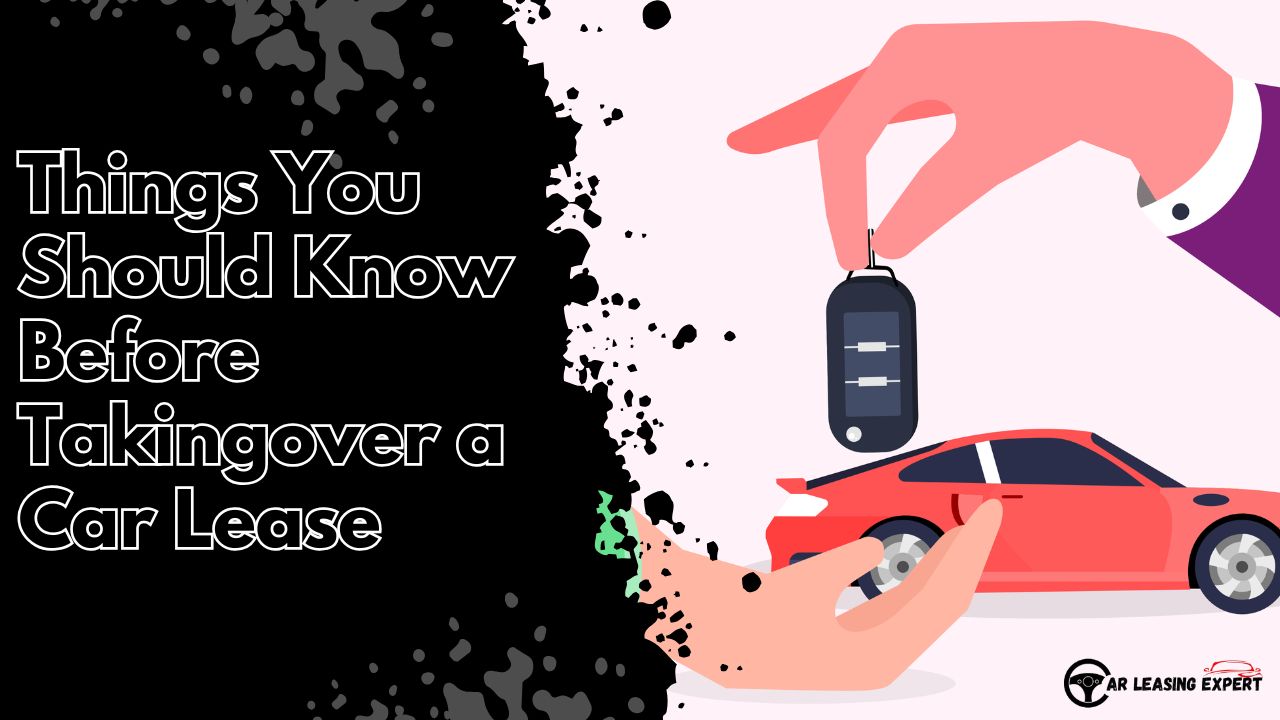A Car lease takeover, also known as a lease assignment or lease assumption, is a process in which a new lessee takes over a vehicle lease from the original lessee before the lease term ends.
Car lease takeover have gained popularity as a flexible and cost-effective alternative to purchasing or leasing a new vehicle. If you are considering this option, it is critical to understand how it works, the benefits, and the potential drawbacks.
For a better understanding, you have read the complete article below.
Key takeaways:
Car lease takeover is a way for the original buyer to transfer a contract to a new lessor.
This can be a good way to lease a vehicle for a short period without having to negotiate a new contract.
For better or worse, you will be responsible for the terms of the original vehicle lease.
Since a lessor who changes a vehicle lease may be a desperate seller, you may be able to get some additional incentives.

What Is a Car Lease Takeover?
A car lease takeover, also known as a lease assumption, is when one person takes over the remaining term of a car lease from the original lessee. Instead of starting a new lease, you take over an existing one, adhering to the same terms and conditions originally agreed to by the first lessee.
Lease takeovers are facilitated through leasing companies, who must approve the transfer. Once the process is complete, the new lessee assumes responsibility for monthly payments, mileage limits, and any other obligations outlined in the original lease.
How Does a Car Lease Takeover Work?
Buying and selling a vehicle works much like buying and selling a new car, in that you don’t buy the vehicle outright. It allows you to drive a new vehicle for a certain amount of miles or time.
How long?
That will largely depend on how much the previous driver used it. Monthly lease payments are determined by the vehicle’s estimated depreciation at the end of the lease term, plus interest. Once the lease is up, you simply return the vehicle to your local area dealer, or you can buy it outright.
Here’s how buying and selling a car works in simple terms:
Finding a new renter: The original renter posts their lease on a marketplace or lease buying and selling platform. Potential new renters can browse these listings and express interest in taking over the lease.
Approval process: The rental company must approve the new renter. This typically involves a credit check and other standard rental requirements. Transfer Agreement: Once approved, the new tenant takes over the lease and assumes responsibility for the remaining lease payments and terms.
Pros And Cons Of Taking Over A Car Lease
Before you agree to a car lease takeover, you should know the advantages and disadvantages of it. You should also consider some important factors when taking over a lease. So let’s move on to the advantages and disadvantages of a car lease takeover
Advantages of a Car Lease Takeover
Lower Upfront Costs: Unlike leasing a new vehicle, a lease takeover often requires minimal upfront expenses. The original lessee may even offer incentives, such as covering the transfer fee, to entice you to take over your lease.
Shorter Commitment: Lease transfers are ideal for those looking for a short-term commitment. Instead of committing to a full lease term (typically 2-4 years), you can enjoy the flexibility of a shorter duration.
Access to Incentives: Many original lessees are eager to get out of their lease early and may offer incentives, such as reduced monthly payments or additional benefits.
Avoiding depreciation: The steepest depreciation occurs in the first year of a new vehicle lease. By assuming the lease, you avoid the initial impact of depreciation.
Disadvantages of Taking Over a Lease
Limited vehicle options: With a lease agreement, you are restricted to vehicles currently available for takeover, which could limit your options in terms of make, model, or features.
Mileage restrictions: Car leases often have mileage limits. If the original lessee has used the majority of the allotted miles, you could face penalties for exceeding the limit.
Transfer fees: Some leasing companies charge fees to facilitate the transfer process. While these fees are usually negotiable, they can increase the overall cost. Try to negotiate these fees to avoid unnecessary expenses.
Wear and tear liability: As a new lessee, you will be responsible for any wear and tear charges assessed at the end of the lease, even if the damage occurred before the transfer.
Steps To Take Over a Car Lease
Here are 5 simple steps that you can follow to taking over a car lease easily:
Search for available leases: Platforms like Swapalease and LeaseTrader specialize in connecting people looking to transfer and take over car leases.
Review lease details: Carefully examine the terms of the lease, including mileage limits, remaining payments, and potential lease-end fees.
Negotiate terms: Discuss incentives or fee coverage with the current lessee to make the deal more favorable.
Request the transfer: Submit an application to the leasing company, which will typically include a credit check to ensure you are qualified to take over the lease.
Finalize the deal: Once approved, complete the necessary paperwork to officially transfer the lease into your name.
Considerations While Taking Over a Car Lease
Don’t jump into a lease takeover without considering crucial factors that could make the deal not so good for you.
Look for the vehicle’s mileage
All lease agreements have a mileage limit that specifies the maximum number of miles allowed over the term of the agreement. When looking for a lease, you should check the vehicle’s current mileage and the number of miles the lease agreement allows. Next, consider whether the remaining mileage is sufficient for your needs.
If you exceed your allowance, you’ll be responsible for any excess mileage charges when your lease ends. Extra miles can cost 20 to 25 cents or more at the end of the lease, so be realistic when estimating your average annual mileage.
You may be able to use a vehicle’s high mileage to negotiate with the current lessee, who may be willing to offer cash to offset excess mileage penalties.
Check monthly payments
When you take over a lease, you can’t renegotiate its terms. Instead, you inherit the same monthly payments and lease terms that the original renter negotiated.
Depending on your credit and finances, each of these scenarios could result in a higher monthly payment than you would have if you had leased a car yourself. Check the minimum credit score required to lease a car.
Before moving forward with a lease purchase, compare prices and lease exchange opportunities involving the same make, model, and year to help you find the best deal for your financial situation.
If you have a bad credit score, you can learn more about leasing a car with a bad credit score.
Wear and tear can be an issue
If you’re considering taking over a lease for a specific car, ask the original renter for service records to confirm that the car has undergone required maintenance.
You can also request a vehicle history report, which can tell you if the car was in a major accident or sustained any damage. To address this issue, you should properly check the condition of the vehicle.
Vehicle Condition
Renters must return cars in good condition. You are responsible for any damage or excessive wear and tear from the previous renter when you take over the lease. Get the following information about the vehicle’s condition:
- Ask for documentation showing that scheduled maintenance has been completed. A renter who terminates a lease for financial reasons could delay routine service.
- Purchase a vehicle history report from AutoCheck or Carfax to verify that the vehicle has been maintained and has not been in any accidents.
- Hire a qualified mechanic to inspect the car. They have the skills and tools to detect problems beyond nicks, scratches and scrapes.
How To Take Over a Car Lease?
What if you’re the one who wants to get out of a car lease early? Here’s how to do your own car lease swap:
- Make sure your lease is eligible for a swap. Some leases prohibit transferring leases.
- Advertise your car lease. You can post it on a website like leasetrader.com or simply post it yourself on social media.
- If a potential buyer contacts you, put them in touch with your rental company.
- You can also negotiate with the interested party, enticing them to take over the lease by helping cover transfer fees or offering a cash incentive.
- Wait for the new buyer to be approved; typically, the rental company will require a credit check.
- File the necessary paperwork with the rental company to make the transfer official.
Is a Lease Takeover Right for You?
A car lease takeover can be a smart move if you’re looking for a short-term vehicle solution, want to avoid significant upfront costs, or prefer not to commit to a new lease. However, it’s crucial to evaluate the lease terms and ensure they align with your needs and budget.
By understanding the ins and outs of car lease takeovers, you can make an informed decision that best suits your driving habits and financial situation.
Best Lease Takeover Websites
If you’re looking to take over a car lease, there are several reputable websites that can help you find the perfect match. Here are some of the best lease takeover platforms:
1. Swapalease
Swapalease is one of the largest lease takeover marketplaces. It offers a wide variety of vehicles, including SUVs, sedans, and luxury cars. The platform is user-friendly, and you can easily browse listings, contact sellers, and initiate the lease takeover process.
2. Quitalease
Quitalease is another popular platform for lease takeovers. It provides extensive listings of vehicles with various lease terms and payment options. The site also offers guidance throughout the process, ensuring a smooth transition for both parties.
3. LeaseTrader
LeaseTrader is a well-known platform that connects leaseholders looking to exit their leases with potential new lessees. The website features a wide range of vehicles and allows users to search based on specific criteria, such as make, model, and lease duration.
Conclusion
A Car Lease Takeover can be a practical solution for both renters who want to end their lease early and those looking for a short-term vehicle commitment. By understanding the process and working with trusted platforms, both parties can benefit from this arrangement.




